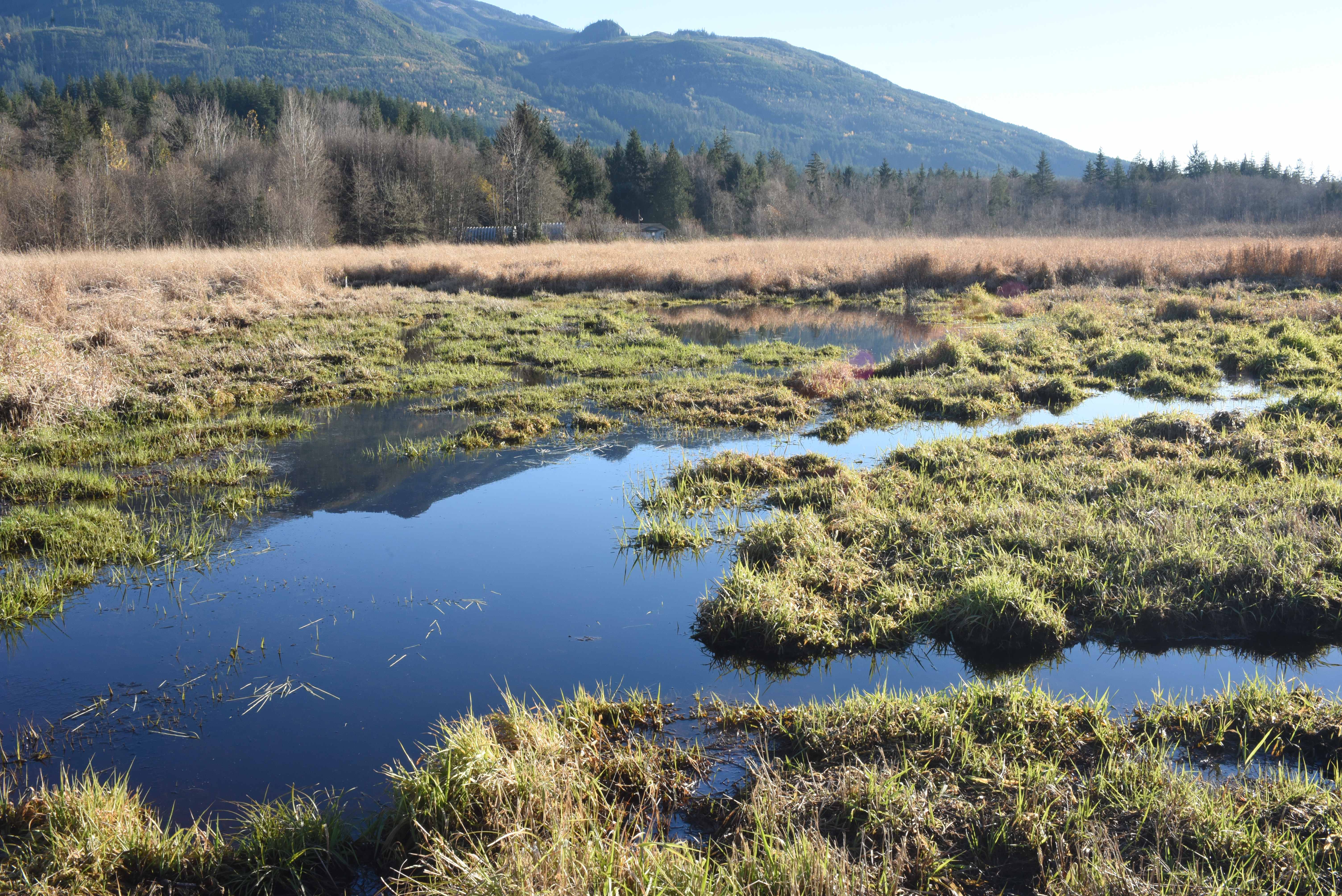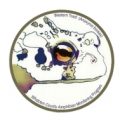2017: Based on the demonstrated effectiveness of the 2016 habitat enhancement, similar measures, including grass mowing, manual removal of tussocks, and spoil-hauling along pathways, were repeated in the same approximate area in 2017. Additional measures were also implemented: (1) smaller satellite pools were created and two existing breeding pools were deepened to supplement larval habitat and provide habitat for metamorphosed young-of-year; (2) Pool A was deepened slightly and enlarged by about 20 percent by removing part of the adjacent floating mat in late summer; and (3) another pool (Pool B) comparable in size to Pool A was created on the floating mat approximately 25 meters from Pool A. The location of Pool B was determined based on measurements of water depth below the dry surface on July 28, 2017, with the intention that Pool B could provide year-around habitat because of deeper, more persistent water.



OSF tadpoles were much more abundant at Southeast Meadow in 2017 than we had observed in previous years. In addition, tadpoles in 2017 were larger and more advanced in development than those at comparable times in 2016 or 2014. Pool A was inhabited by a large number of tadpoles, who had largely completed metamorphosis by early July.



Reed canary-grass re-sprouted on the floating mat surrounding Pool A, but generally remained sparse compared to unmanaged areas, and provided openings for other plant species to appear. Removal of the sod layer in the pool and at the margins also may have been effective in removing most of the viable reed canary-grass seeds from the soil: few seedlings of this species appeared as Pool A gradually dried, and these were easily removed. In contrast, seedlings of native wetland plant species, including Manna-grass and Bur-reed, were numerous. By the time that Pool A was refilled by autumn rain, these species were well established and subsequently spread within the pool. Although it is unrealistic to assume that reed canary-grass can be permanently removed or replaced so easily, the results demonstrate initial habitat restoration need not include planting or reseeding, provided that the soil seed bank is comprised of native species. In addition, the restored pools favor Manna-grass, Bur-reed, and other native species adapted for prolonged periods with roots underwater.





